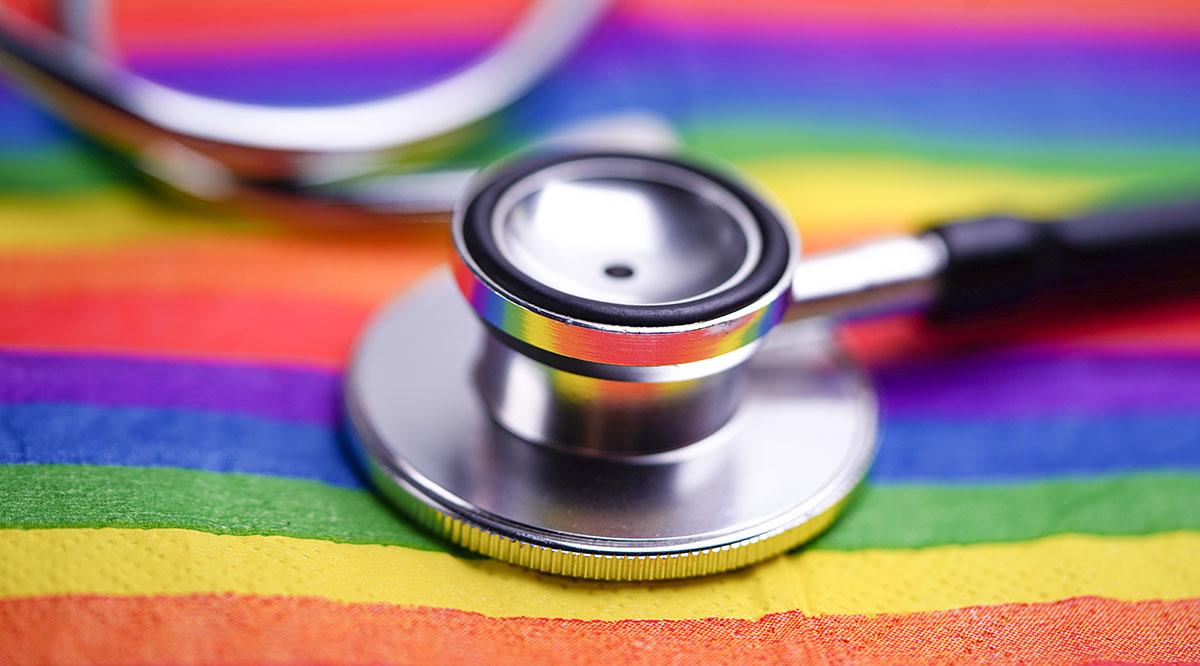Editor's note: The opinions expressed by the author do not necessarily reflect the opinions of the AAMC or its members.
“I don’t want to buy hormones off the gray market anymore. I need a ‘real’ doctor who looks like me. Who understands me. Do you know anyone?”
This was the text message I received from Krystal on a blazing hot afternoon in mid-July.
We’d met in 2019 at a community health center, a month before I started medical school. Years of distress from gender dysphoria and constant bullying for being “effeminate” led Krystal — now in their mid-20s and working as a retail clerk — to come to the clinic to explore the gender transition process. While the doctor, therapist, and social worker tending to Krystal’s health care needs agreed that transitioning would likely relieve some of Krystal’s distress, a lack of health insurance was a major barrier.
But I knew that the medical school I was matriculating into had a low-cost clinic, so we exchanged numbers and I sent over all the details for them to consider. Ultimately, the long commute and other personal factors didn’t make the clinic a good match.
The last time I’d heard from Krystal was on New Year’s Day in 2020. They were being helped by a person who had gone through the same process five years earlier. “I promise it’s safe!” Krystal texted me. “I’ll reach out if I need anything.”
So, when Krystal reached out in July, I was concerned. I also realized that I didn’t know a single transgender or gender nonbinary (TGNB) doctor in New York City.
In my mind, I hurriedly combed through a list of all the attending physicians who had given lectures: No one was TGNB-identifying that I knew of.
As a short-term solution, I referred Krystal to a local LGBTQ+ health center, and soon after, I started looking into the prevalence of TGNB medical students and physicians. The numbers are alarming.
In a 2018 matriculating student survey by the Association of American Medical Colleges, just 0.7% of respondents identified as TGNB (about 100 out of nearly 14,500 respondents). Furthermore, these statistics don’t shed any light on geographic distribution. Due to the discrimination and disparagement that TGNB medical students admittedly face during training, they likely migrate to just a few centers for training and practice, thus worsening TGNB patient care.
The need for that care is growing exponentially. Approximately 1.4 million Americans identify as transgender and gender nonbinary. A GLAAD survey from 2017 showed that nearly 12% of millennials identified as TGNB. And a 2020 survey from the Trevor Project found that 1 in 4 LGBTQ youth use pronouns or pronoun combinations that fall outside of the binary construction of gender.
Unfortunately, those who identify as TGNB are increasingly vulnerable and marginalized in their communities, which has translated into high rates of depression, self-harm, homelessness, disordered substance use, and HIV and other sexually transmitted infections, with trans youth and racial/ethnic minorities being the most vulnerable. To make matters worse, health care settings have perpetuated intolerance. One in 5 TGNB patients has been denied access or treatment in a clinician’s office, 30% have experienced disrespect and harassment, 2% have been physically assaulted, and nearly half have had to teach their clinicians about the care they need.
During the COVID-19 pandemic, some studies have shown that transgender women with HIV are more susceptible to contracting the virus. And due to disruption in outpatient care, many TGNB individuals are unable to receive routine care, including gender-affirming hormone replacement therapy.
As medical schools serve a major gatekeeping role in diversifying the physician workforce and ultimately meeting the needs of vulnerable populations, there are a few ways in which medical schools can be actively engaged in improving TGNB visibility.
- Admissions offices could make a concerted effort to feature TGNB medical students and physicians in brochures, pamphlets, and other types of public messaging materials. These explicit messages of inclusivity may motivate more TGNB individuals to apply to and matriculate into medical school and could also help TGNB students express themselves professionally.
- Medical schools need to do outreach to middle schools, high schools, and colleges to vocalize acceptance of any gender identity and convey what schools are doing to actively discourage harassment in training programs. There are several existing pipeline programs to improve ethnic diversity in medicine, including Weill Cornell Medicine’s Travelers Summer Research Fellowship Program and Cooper Medical School of Rowan University’s PULSE program. Similar programs could be launched to attract sexual and gender minorities.
- Medical schools should consider making all restrooms gender-neutral to create a welcoming environment for TGNB individuals. While this issue has been significantly politicized, it is one simple example of how medical institutions — as pioneers of health care — can accommodate TGNB individuals.
- Individuals who identify as transgender are more racially and ethnically diverse than the general U.S. population, with 16% identifying as Black and 21% identifying as Latino or Hispanic. Specific outreach to those communities will be critical.
- Medical schools should work to recruit more TGNB faculty and staff who can be important role models for students and premeds seeking to enter the field.
Less than 1% of physicians identify as TGNB. Other practicing physicians admit to a gap in knowledge when it comes to even day-to-day care for TGNB patients. And yet the TGNB population is growing. As medical institutions, we need to do better. While the road ahead will be long, we can catalyze change by inspiring more individuals to apply and matriculate into medical school.

